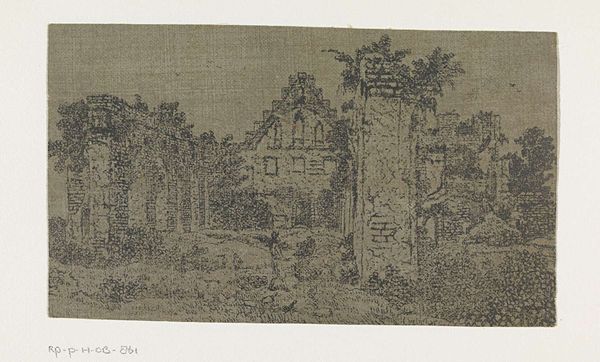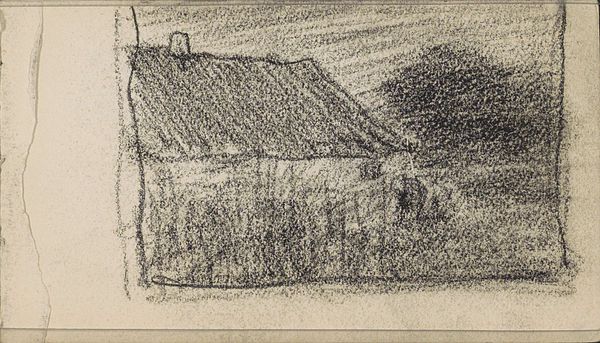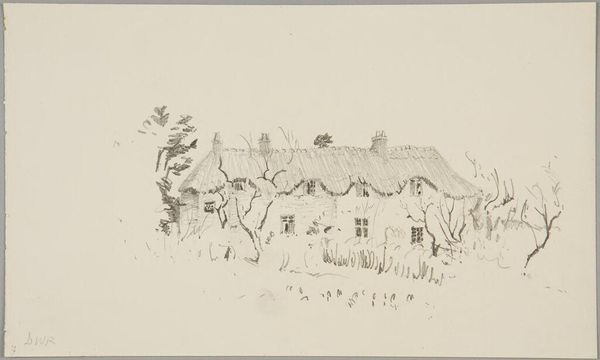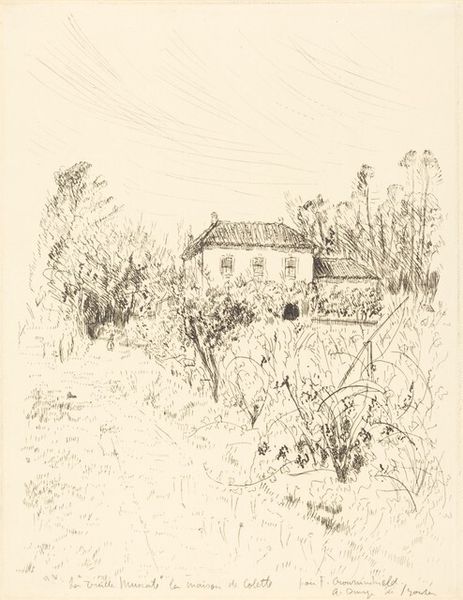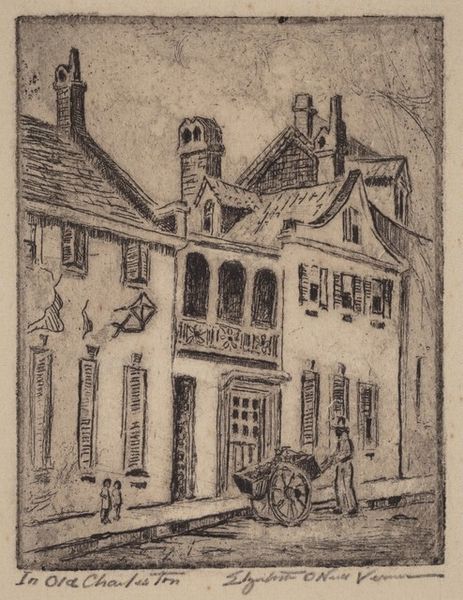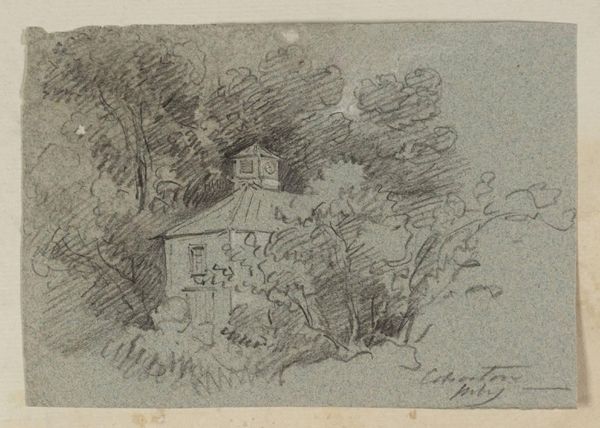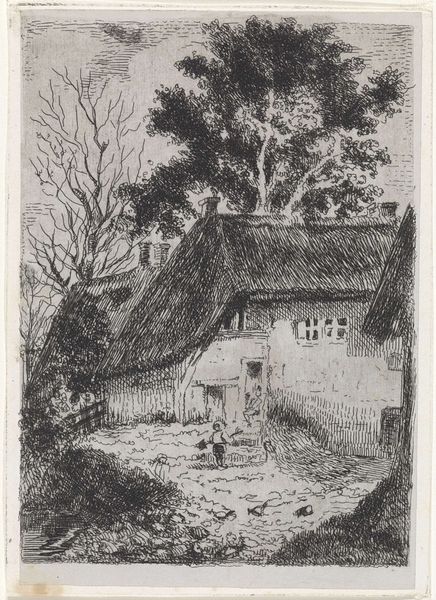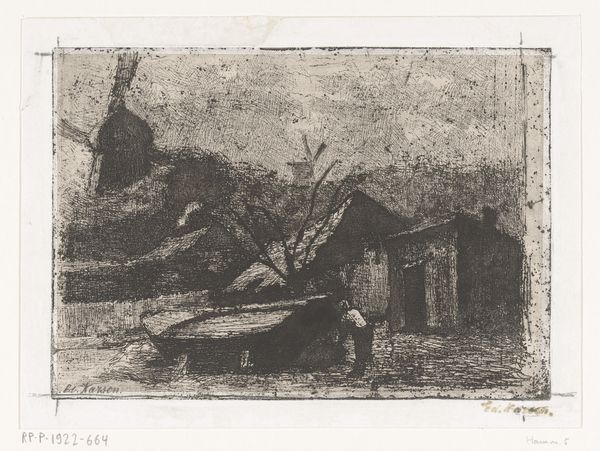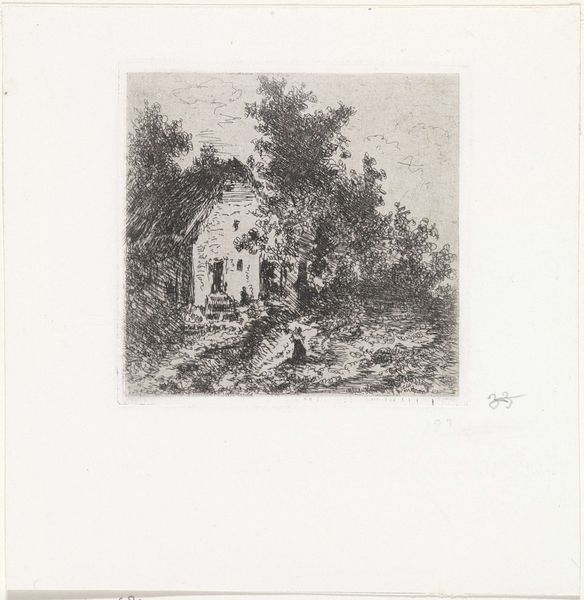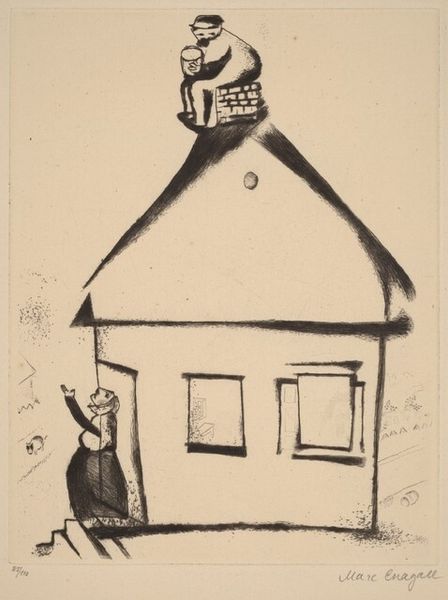
drawing, print, pencil, graphite
#
pencil drawn
#
drawing
# print
#
pencil sketch
#
landscape
#
pencil drawing
#
pencil
#
graphite
Dimensions: 5 1/2 x 4 3/4 in. (13.97 x 12.07 cm) (image)6 3/4 x 6 in. (17.15 x 15.24 cm) (sheet)
Copyright: No Copyright - United States
Curator: "House and Tree II," conceived in 1931-32, is a lithograph by Wanda Gág, rendered in pencil and graphite. My first thought goes to how vulnerable and dreamlike it appears, like a half-recalled memory fading into the past. Editor: Dreamlike, definitely. And considering Gág's sociopolitical lens, her work interrogates power, gender, and capitalism in very deliberate ways, I wonder if the seeming fragility reflects anxieties around home and security during the Great Depression. What sort of psychological weight does "home" carry, do you think? Curator: Well, the house itself, despite the sketch-like quality, echoes traditional folk imagery of shelter and family, almost fairytale-like. This, contrasted with the somber, almost haunting tonality, suggests to me a sense of nostalgia, perhaps for a more stable or idyllic past. Even the tree—a traditional symbol of rootedness and growth—appears somewhat skeletal here. Editor: Exactly. And that narrow, winding path leading to the house, barely marked on the ground—does it suggest limited opportunity or a precarious journey toward stability? Considering that Gág championed the rights of working-class women, such understated vulnerability gains significance, amplifying social inequity and powerlessness within familiar domestic space. Curator: I find that incredibly insightful. Beyond the social commentary, the starkness also directs us to contemplate the internal space, too, wouldn’t you agree? The sparseness allows viewers to project their own experiences onto it. It evokes the universal human experience of searching for home, or questioning the meaning of home and belonging. Editor: It is that search and questioning, indeed, that makes the piece so pertinent now. Looking at contemporary global concerns – climate displacement, housing precarity – the piece continues to invite complex interpretations. What did Gág imagine the house to represent? Escape? Safety? Something altogether more ambivalent? Curator: Perhaps it captures the delicate balance, the hope and vulnerability inherent in creating a safe place amid times of uncertainty, whether economic, personal, or even global. It certainly highlights the importance of symbols and their powerful endurance over time. Editor: I agree. Ultimately, I think Gág uses familiar icons—home and tree—to challenge our assumptions about comfort and belonging, inviting us to grapple with complex sociopolitical themes while stirring our deepest human sensibilities.
Comments
No comments
Be the first to comment and join the conversation on the ultimate creative platform.

